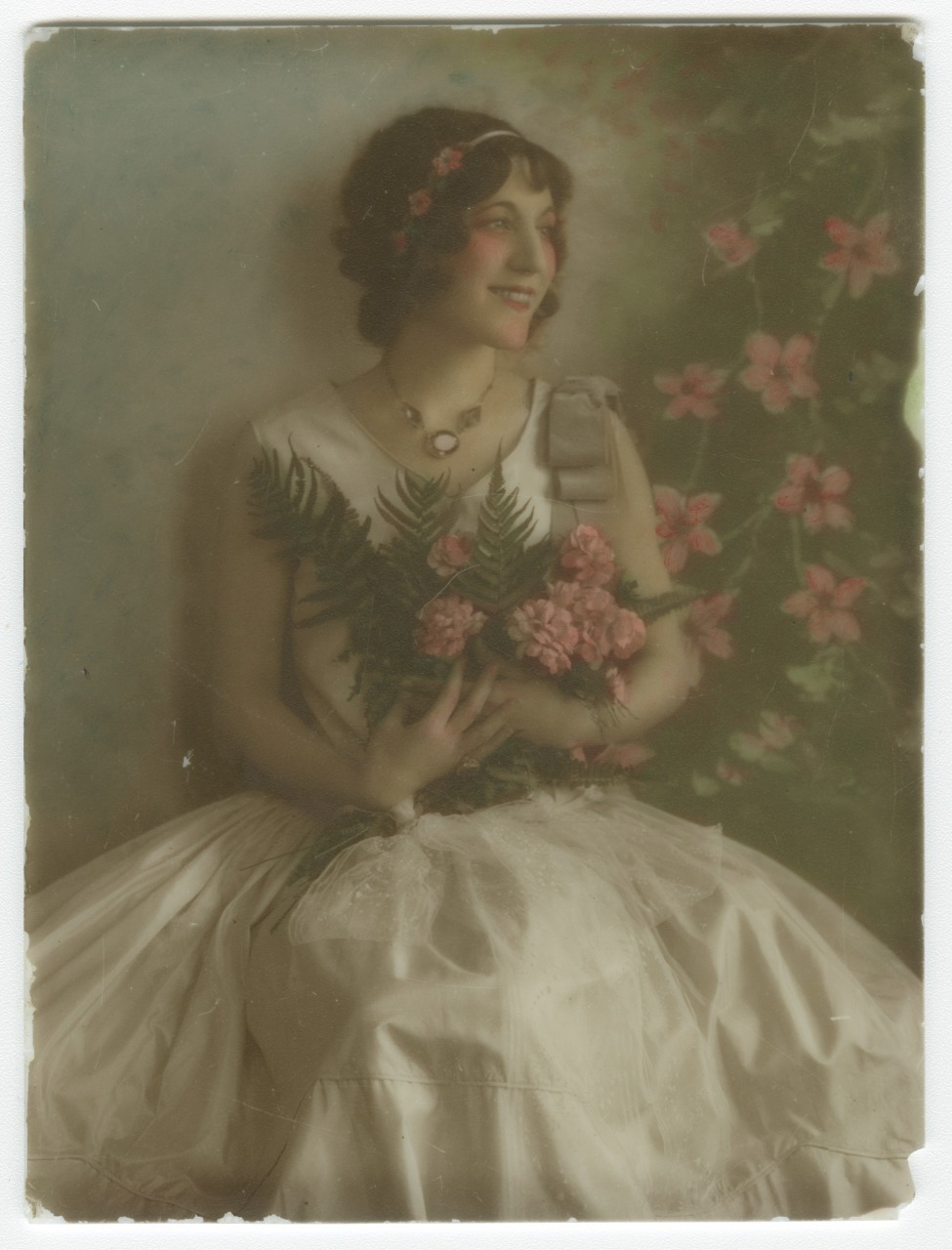The opalotype process, while not widely used, also evolved throughout the history of photography and could be made with either collodion or gelatin as the light-sensitive emulsion coating. Opalotypes were named for the substrate, opal glass, a translucent white glass. They were also called milk-glass positives. Opalotypes evoked the look of portrait miniatures painted on ivory. Two basic techniques were used to make an opalotype. One involved the transfer of a print to a milk-glass substrate, and the other used a negative to print directly on light-sensitive emulsion applied to the milk glass. Some examples were hand-tinted to enhance their resemblance to painted miniatures.

Girl with flowers
opalotype with hand coloring; ca. 1930
by Richard Relf
The Historic New Orleans Collection, gift of Richard Relf, 1979.381.7
